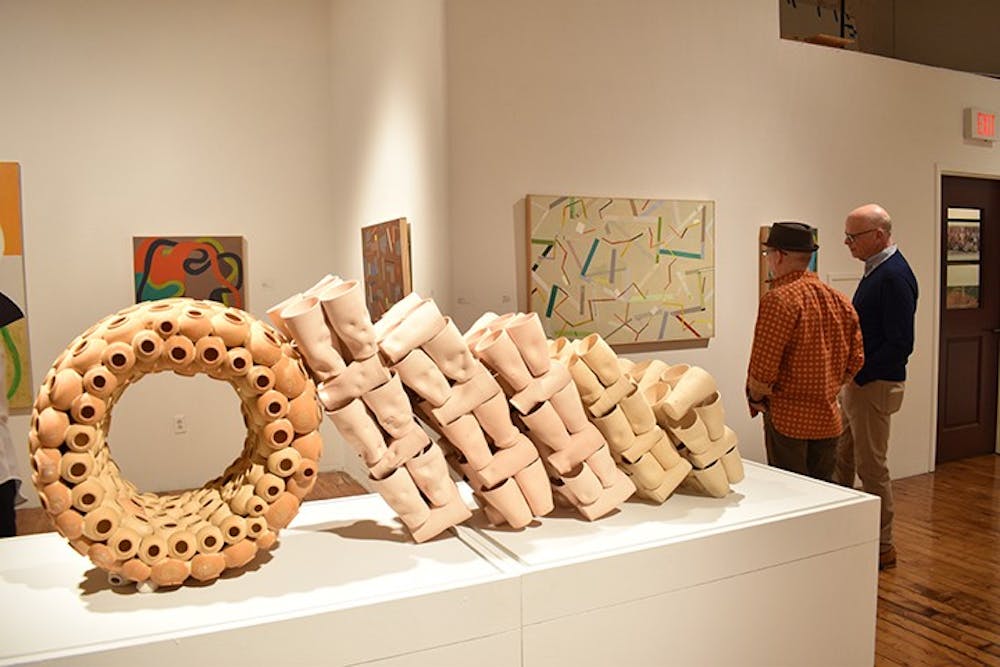Like the New Deal in the Great Depression, the arts as a whole deserve a helping hand from the federal government in the age of COVID-19.
Keystone places for the arts and humanities, such as the Smithsonian collection of art museums and Broadway, are indefinitely closed, while others, such as the Metropolitan Museum of Art, have tickets available by reservation only.
In South Carolina, art galleries are struggling. These may seem like businesses for the wealthy, but many host painting classes and exhibitions, which are nearly impossible to do during a pandemic. Only those who have accumulated a solid client list over a number of years aren’t worried about shutting down permanently.
During lockdowns, such businesses, along with theaters, museums of art or shops that sell 3-D works such as pottery, ceramics and glass, are forced to close since they are deemed nonessential. Many were told they didn’t qualify for small business loans or the Paycheck Protection Program. Opera houses and theaters can stream previous performances, but can’t welcome audiences or ensure quality internet (or the safety of whole casts) for livestreaming new performances.
While every industry needs help in a time like this, the arts seem to be cast aside. “Nonessential” does not equal “unimportant." Not only does art provide jobs in all its forms, but it provides beauty in public spaces. This was recognized in one of the worst times for "nonessential" businesses: the Great Depression.
Former President Franklin Roosevelt’s New Deal included the Works Progress Administration or WPA. This one administration created over 8.5 million new jobs. While many were in public infrastructure, the WPA also funded art, theater, performance, music and writing programs across the country. Over 2,500 murals and 17,000 statues were created in public spaces.
In fact, two programs created under the WPA, the National Foundation for the Arts and the National Endowment for the Humanities, still exist today.
However, two programs alone aren’t enough to help entertainment and the arts survive through this extraordinary time. As reported by USA Today, 2.7 million people who worked in arts, design, entertainment, music, theater and general media lost their jobs from April through July of last year. Last spring, the average salary of an American artist crashed to $14,000 a year.
There should be a new WPA for this critical new juncture in American history. People deemed nonessential should be able to have a job, make a wage and generally survive and thrive regardless of whether the economy could survive without them. This is also one of those industries where the product produced so plainly and obviously benefits the public: Think murals, art museums, public performances, art classes and sculptures.
Even services that are paid for, such as pottery, glass, paintings, music, theater, movies and writing, would benefit if their creators could work without worrying if they can pay this month’s rent. People, no matter how terrible they’re doing financially, deserve to have something beautiful to look at as they walk down the street.
Artwork is good for more than its cultural and economic value. A study from 2011 found a correlation between participating in cultural activities — creating art, going to concerts, viewing art galleries, etc. — and lower rates of depression and anxiety, along with good overall health. Another found that when viewing artwork one finds beautiful, the brain releases dopamine, the chemical related to feeling pleasure, love and satisfaction.
Not only does the public deserve access to the goods and services of artists for their aesthetic, mental or economic benefits, artists deserve to use their craft to make a living without suffering financially.
As Harry Hopkins, director of multiple New Deal programs said, “Hell, [artists] have got to eat just like other people.”

